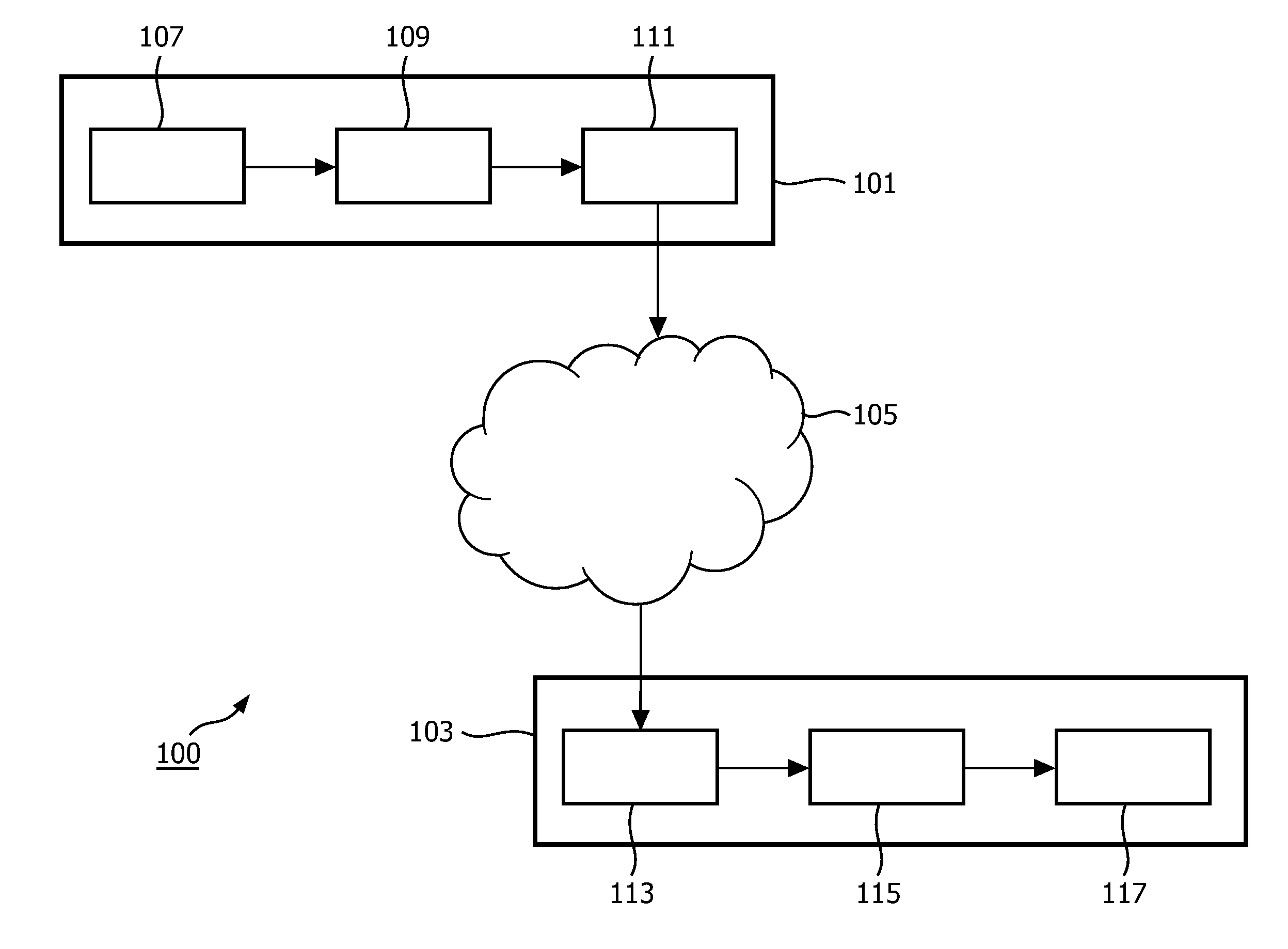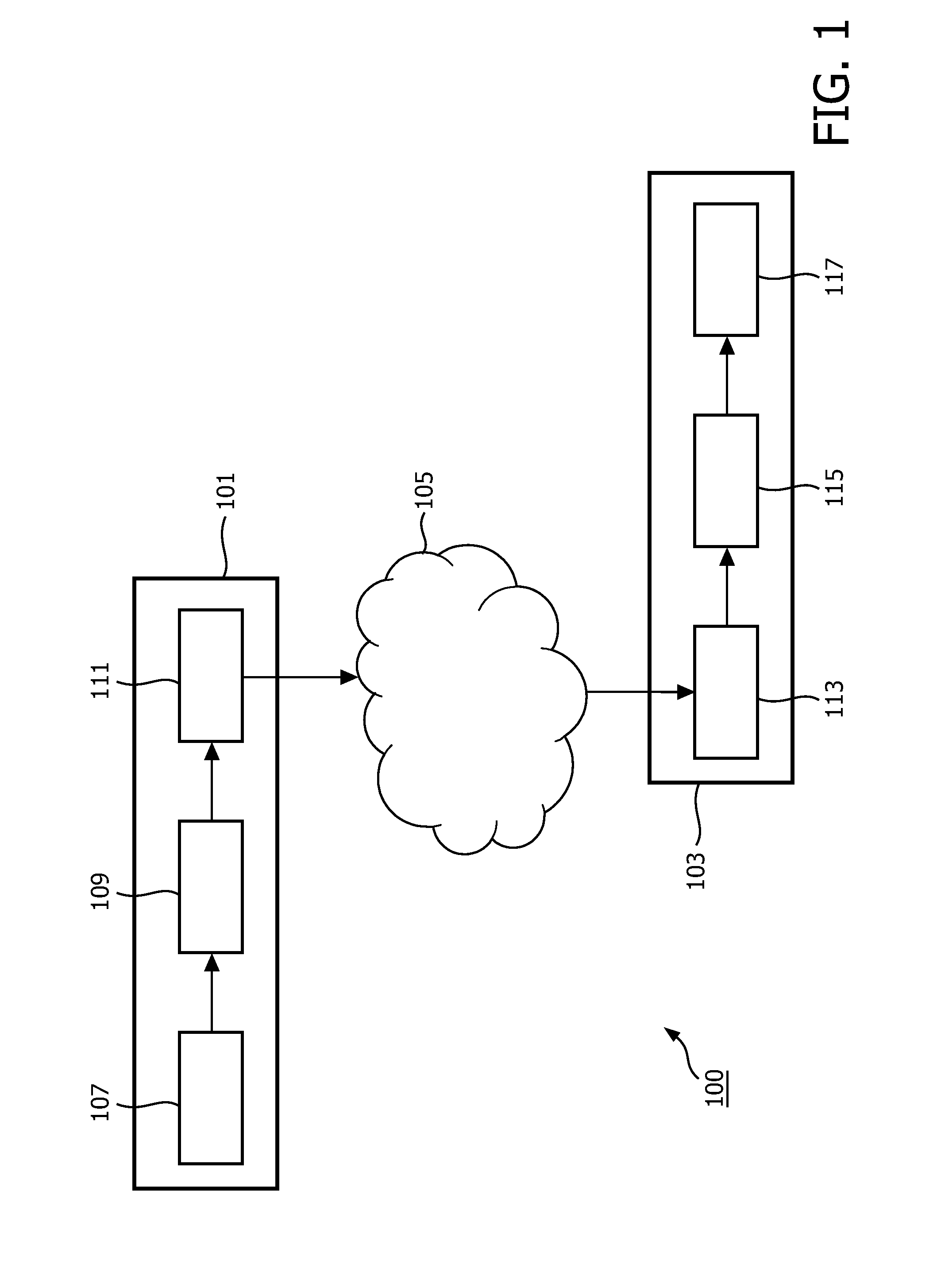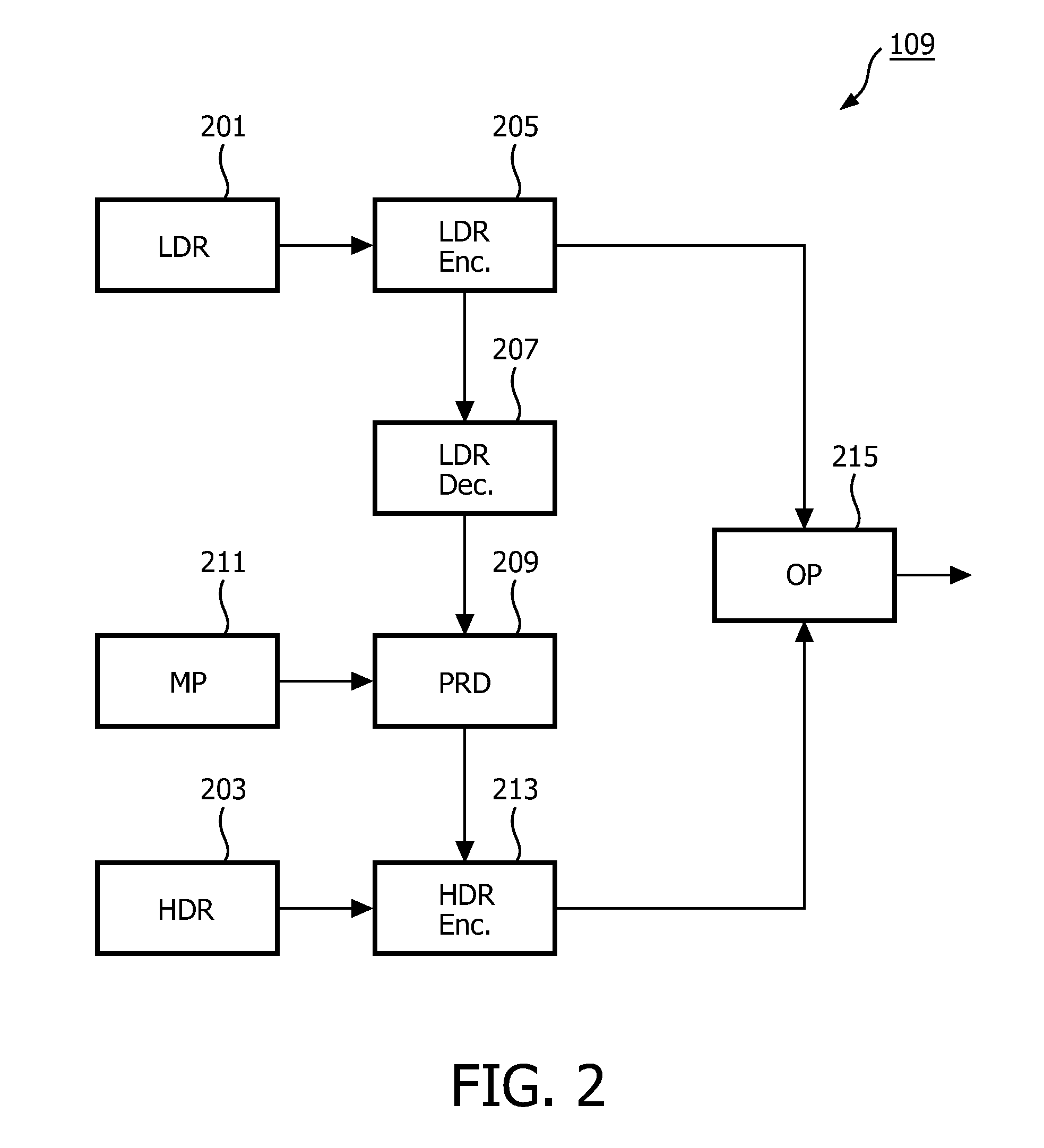Generation of high dynamic range images from low dynamic range images
a high dynamic range and image technology, applied in the field of high dynamic range image generation from low dynamic range image, can solve the problems of insufficient headroom and accuracy to convey traditional video formats, annoying quantization and clipping artifacts, and the dynamic range of reproduced images has tended to be substantially reduced in relation to normal vision, so as to improve the prediction of an hdr image, improve the encoding of hdr images, and reduce residual signals
- Summary
- Abstract
- Description
- Claims
- Application Information
AI Technical Summary
Benefits of technology
Problems solved by technology
Method used
Image
Examples
Embodiment Construction
[0095]The following description focuses on embodiments of the invention applicable to encoding and decoding of corresponding low dynamic range and high dynamic range images of video sequences. However, it will be appreciated that the invention is not limited to this application and that the described principles may be applied in many other scenarios and may e.g. be applied to enhance or modify dynamic ranges of a large variety of images.
[0096]FIG. 1 illustrates a transmission system 100 for communication of a video signal in accordance with some embodiments of the invention. The transmission system 100 comprises a transmitter 101 which is coupled to a receiver 103 through a network 105 which specifically may be the Internet or e.g. a broadcast system such as a digital television broadcast system.
[0097]In the specific example, the receiver 103 is a signal player device but it will be appreciated that in other embodiments the receiver may be used in other applications and for other pu...
PUM
 Login to View More
Login to View More Abstract
Description
Claims
Application Information
 Login to View More
Login to View More - R&D
- Intellectual Property
- Life Sciences
- Materials
- Tech Scout
- Unparalleled Data Quality
- Higher Quality Content
- 60% Fewer Hallucinations
Browse by: Latest US Patents, China's latest patents, Technical Efficacy Thesaurus, Application Domain, Technology Topic, Popular Technical Reports.
© 2025 PatSnap. All rights reserved.Legal|Privacy policy|Modern Slavery Act Transparency Statement|Sitemap|About US| Contact US: help@patsnap.com



